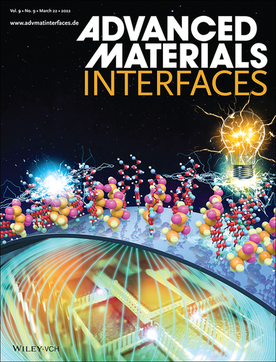利用 1DZnO 光学纳米生物传感器进行实时纳米级细菌检测
IF 4.4
Q2 ENGINEERING, BIOMEDICAL
引用次数: 0
摘要
光学生物传感器 基于氧化锌纳米结构的生物传感器可实时(5-10 秒)检测肠致病性大肠杆菌,其光学响应随细菌浓度的变化而变化,并可区分存活细胞和裂解细胞。更多详情请见 Ateet Dutt 及其合作者撰写的文章 2400013。本文章由计算机程序翻译,如有差异,请以英文原文为准。


Real-Time Nanoscale Bacterial Detection Utilizing a 1DZnO Optical Nanobiosensor
Optical-Biosensors
ZnO nanostructure-based biosensors detect enteropathogenic Escherichia coli in real-time (5–10 sec), with optical responses varying by bacterial concentration, distinguishing between viable and lysed cells. More details can be found in article 2400013 by Ateet Dutt and co-workers.
求助全文
通过发布文献求助,成功后即可免费获取论文全文。
去求助
来源期刊

Advanced Nanobiomed Research
nanomedicine, bioengineering and biomaterials-
CiteScore
5.00
自引率
5.90%
发文量
87
审稿时长
21 weeks
期刊介绍:
Advanced NanoBiomed Research will provide an Open Access home for cutting-edge nanomedicine, bioengineering and biomaterials research aimed at improving human health. The journal will capture a broad spectrum of research from increasingly multi- and interdisciplinary fields of the traditional areas of biomedicine, bioengineering and health-related materials science as well as precision and personalized medicine, drug delivery, and artificial intelligence-driven health science.
The scope of Advanced NanoBiomed Research will cover the following key subject areas:
▪ Nanomedicine and nanotechnology, with applications in drug and gene delivery, diagnostics, theranostics, photothermal and photodynamic therapy and multimodal imaging.
▪ Biomaterials, including hydrogels, 2D materials, biopolymers, composites, biodegradable materials, biohybrids and biomimetics (such as artificial cells, exosomes and extracellular vesicles), as well as all organic and inorganic materials for biomedical applications.
▪ Biointerfaces, such as anti-microbial surfaces and coatings, as well as interfaces for cellular engineering, immunoengineering and 3D cell culture.
▪ Biofabrication including (bio)inks and technologies, towards generation of functional tissues and organs.
▪ Tissue engineering and regenerative medicine, including scaffolds and scaffold-free approaches, for bone, ligament, muscle, skin, neural, cardiac tissue engineering and tissue vascularization.
▪ Devices for healthcare applications, disease modelling and treatment, such as diagnostics, lab-on-a-chip, organs-on-a-chip, bioMEMS, bioelectronics, wearables, actuators, soft robotics, and intelligent drug delivery systems.
with a strong focus on applications of these fields, from bench-to-bedside, for treatment of all diseases and disorders, such as infectious, autoimmune, cardiovascular and metabolic diseases, neurological disorders and cancer; including pharmacology and toxicology studies.
 求助内容:
求助内容: 应助结果提醒方式:
应助结果提醒方式:


